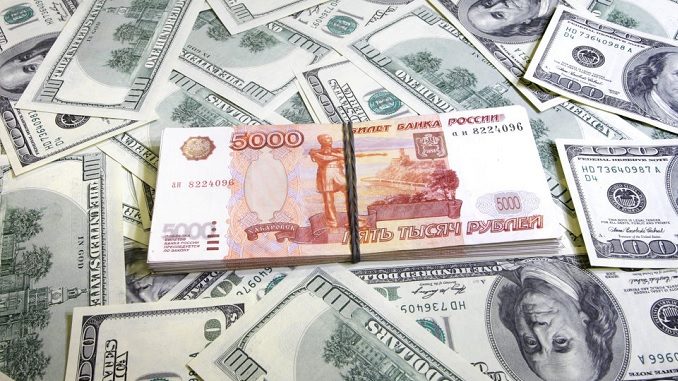
The seasonal increase in ruble supply from Russian exporters, especially amid recovering oil prices, offsets the negative impact of foreign currency purchases by the Bank of Russia, Russia Business Today reports.
The value of Russia’s national currency has been robustly increasing since the beginning of the year. On Wednesday, the U.S. dollar-ruble exchange rate fell below 66 rubles, while the euro-ruble rate dipped below the 75-ruble mark.
“The ruble is growing stronger along with other developing market currencies, the reason being that investors have become less concerned about trade wars,” said Chief Economist at Alfa-Bank Natalia Orlova.
Increasing oil prices are providing additional support. However, the Central Bank’s move to resume foreign currency purchases under the budget rule turned out to be on a smaller-than-expected scale. From January 15 to February 6, the Central Bank plans to spend 265.8 billion rubles on foreign currency purchases, which translates to buying foreign currency to the tune of $15.6 billion rubles every day. This is the largest figure since April 2018.
“The market had larger amounts in mind when setting out currency prices, so now this factor will not influence the prices much,” Head of Fixed Income, Currencies & Commodities at Citi Russia Denis Korshilov said.
Under the current climate, market participants expect the ruble exchange rate to continue growing. According to Mikhail Poddubsky, Chief Analyst at Promsvyazbank, the ruble still is not expensive and if risk appetite remains steady on global markets, it may continue to grow moderately. “Russia’s current transactions are seasonally strong and easily offset foreign currency purchases under the budget rule. We expect the dollar-ruble exchange rate to gradually decline to 65 rubles by the end of the quarter,” Poddubsky stated. “However, tensions over sanctions will persist in the coming two months and the ruble should not be expected to strengthen significantly,” Orlova noted.

Be the first to comment